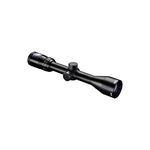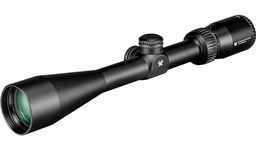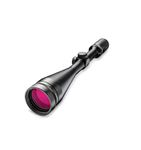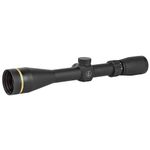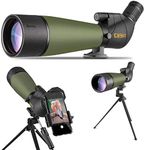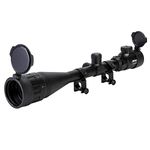10 bestHunting Scopesof December 2025
112M consumers helped this year.
1

Leupold Optics, VX-Freedom Riflescopes - 3-9x50mm, 30mm, Matte, Illuminated Fire-Dot Twilight Hunter
Leupold

10.0
2
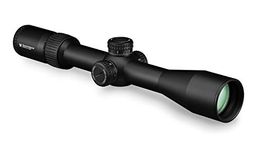
Vortex Optics Diamondback Tactical 4-16x44 First Focal Plane Riflescopes - EBR-2C (MRAD) Tactical Reticle
Vortex

10.0
3
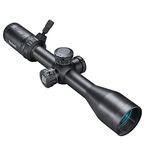
Bushnell 3-9x40 Riflescope with DZ 223 Reticle
Bushnell

9.9
4
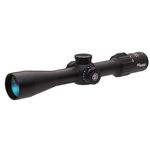
Sig Sauer SIERRA3BDX 4.5-14x50mm Riflescope, Black
Sig Sauer

9.8
5

Leupold Optics, VX-Freedom Riflescopes - 4-12x40mm, 1", 1/4 MOA, Creedmoor Reticle, Matte
Leupold

9.7
Other
6
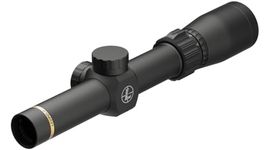
Leupold VX-Freedom 1.5-4x20mm Riflescope, Pig-Plex Reticle, Matte Finish
Leupold

9.5
7
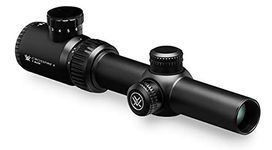
Vortex Optics Crossfire II 1-4x24mm Riflescope w/V-Brite Reticle, Black (CF2-31037), 30mm Tube, 1-4 X 24
Vortex

9.3
8
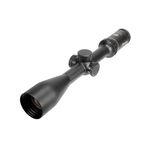
Burris Fullfield E1 4.5-14x42mm Riflescope with Ballistic Plex E1 Reticle - 200338
Burris

9.1
9
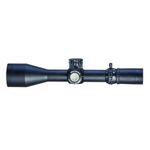
Nightforce ATACR Riflescopes - 5-25x56mm, 34mm, 2nd Focal Plane, ZeroStop, .1 Mil-Radian Click Value, Side Parallax Adjustment, Mil-R, DigIllum, PTL
Nightforce

8.8
10

Bushnell Banner Dusk and Dawn Multi-X Reticle Adjustable Objective Riflescope, 6-18x 50mm, Black (616185)
Bushnell

8.6
A Guide to Selecting the Best Hunting Scopes
Choosing the right hunting scope can make a big difference in your hunting experience. The right scope helps you see your target more clearly, improves your accuracy, and can even make hunting safer. When picking a scope, it's important to think about where and how you hunt, the type of game you pursue, and your own comfort with using optics. Understanding the main features of hunting scopes will help you make a choice that fits your needs and helps you get the most out of your time outdoors.
Magnification
Magnification tells you how much closer the scope makes your target appear. This is usually shown as a number, like 3-9x, where the first number is the lowest magnification and the second is the highest. Lower magnification (like 1-4x) is good for close-range hunting and fast-moving targets, while higher magnification (like 9-12x or more) is better for long-range shots. If you hunt in thick woods or at shorter distances, a lower magnification is easier to use and gives you a wider view. For open fields or long-range hunting, higher magnification helps you see distant targets more clearly. Think about the typical distance of your shots and choose a magnification range that matches your hunting style.
Objective Lens Diameter
The objective lens diameter is the size of the front lens, measured in millimeters. A larger lens lets in more light, which can make the image brighter, especially in low-light conditions like dawn or dusk. Common sizes range from 32mm to 50mm or more. Smaller lenses make the scope lighter and easier to carry, while larger lenses are better for seeing in dim light but add weight. If you often hunt in low-light conditions, a bigger objective lens can help. If you prefer a lighter setup or hunt during the day, a smaller lens may be enough.
Reticle Type
The reticle is the pattern you see when you look through the scope, often called the crosshairs. There are many types, from simple crosshairs to more complex designs with extra markings for estimating distance or bullet drop. Simple reticles are easy to use and good for beginners or close-range hunting. More advanced reticles can help with long-range shots but may take time to learn. Choose a reticle that matches your experience level and the type of hunting you do. If you mostly take short to medium-range shots, a basic reticle is usually best. For long-range or precision shooting, consider a reticle with extra features.
Eye Relief
Eye relief is the distance you can hold your eye from the scope and still see the full image. Longer eye relief is important for safety, especially with powerful rifles that have strong recoil, because it helps prevent the scope from hitting your face. Typical eye relief ranges from about 3 to 4 inches. If you use a rifle with heavy recoil or wear glasses, look for a scope with longer eye relief. For lighter rifles or low-recoil guns, standard eye relief is usually fine.
Field of View
Field of view is how wide an area you can see through the scope at a certain distance, usually measured in feet at 100 yards. A wider field of view makes it easier to spot moving targets and track animals, especially at lower magnifications. If you hunt in dense woods or need to follow fast-moving game, a scope with a wide field of view is helpful. For long-range, stationary targets, a narrower field of view is less of a concern.
Durability and Weather Resistance
Durability and weather resistance refer to how well the scope can handle tough conditions like rain, fog, and bumps. Look for scopes that are waterproof, fog-proof, and shockproof, especially if you hunt in changing weather or rough terrain. These features help ensure your scope stays clear and functional no matter where you hunt. If you often hunt in harsh environments, prioritize these qualities to avoid problems in the field.
Best Reviews Guide Newsletter
Get exclusive articles, recommendations, shopping tips, and sales alerts
Sign up for our newsletter to receive weekly recommendations about seasonal and trendy products
Thank you for subscribing!
By submitting your email address you agree to our Terms and Conditions and Privacy Policy
